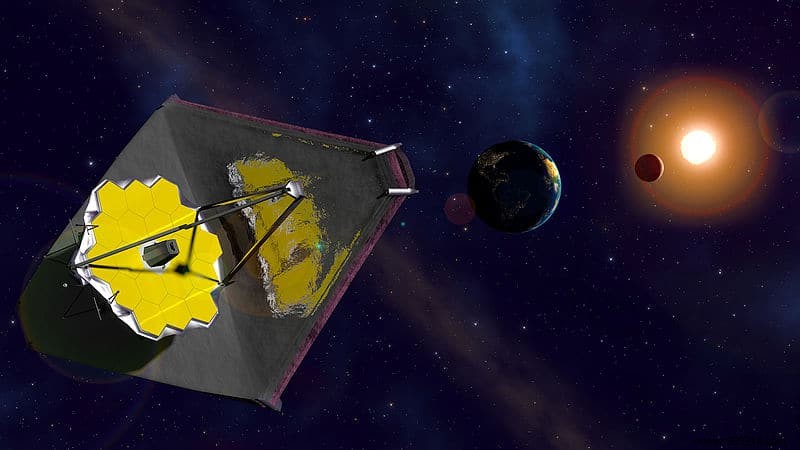The James Webb Telescope hasn't even embarked on its first science mission yet that NASA is already claiming that its work could be extended beyond ten years thanks to the excess fuel available for its onboard thrusters.
Successfully launched on December 25, the James Webb Telescope is currently undergoing a complex and unprecedented commissioning process. The observatory's thrusters successfully fired just over twelve hours after liftoff to correct its trajectory. This Tuesday, December 28, the observatory triggered the deployment of its sun visor, one of the centerpieces of the mission. In a few days, the two mirrors of the telescope will in turn deploy before arriving at the Lagrange 2 (L2) point scheduled for the end of January.
After a series of calibration operations, the official phase of scientific operations can begin in just under six months.
That being said, it was normally expected that the JWT would have a lifespan of around five years during which it could probe the oldest stars and galaxies, analyze the atmosphere of several nearby exoplanets or unlock the secrets of dark matter. However, the observatory could go into extra time.
Indeed, the JWT should have enough fuel to more than double its lifespan minimal, according to a NASA update.
"After analyzing its initial trajectory, the Webb Telescope team determined that the observatory should have enough propellant to support scientific operations in orbit for well over a ten-year scientific lifetime “, Agency officials wrote in a statement released on Wednesday, December 29. By way of comparison, the Hubble telescope has been making a name for itself for more than thirty years.

This extra propellant is largely due to the precision of the Ariane 5 launch, which exceeded the requirements needed to put the telescope on the right track. We also owe this surplus to the precision of the first correction maneuver carried out at mid-course.
Throughout its journey to L2, the Observatory will need to perform two more Thruster Burns occasionally to manage its momentum and keep it on course. The success of these next operations could extend the life of the mission even further, even if NASA is careful not to offer a precise estimate, as the factors that can affect the telescope's operating life are numerous.